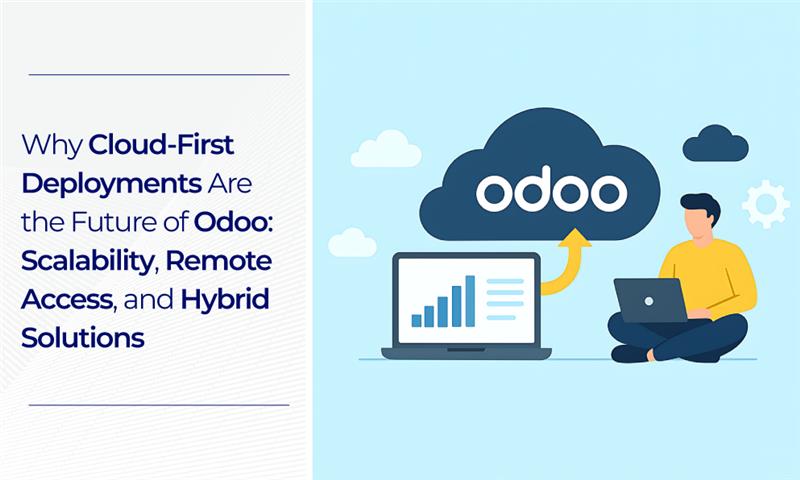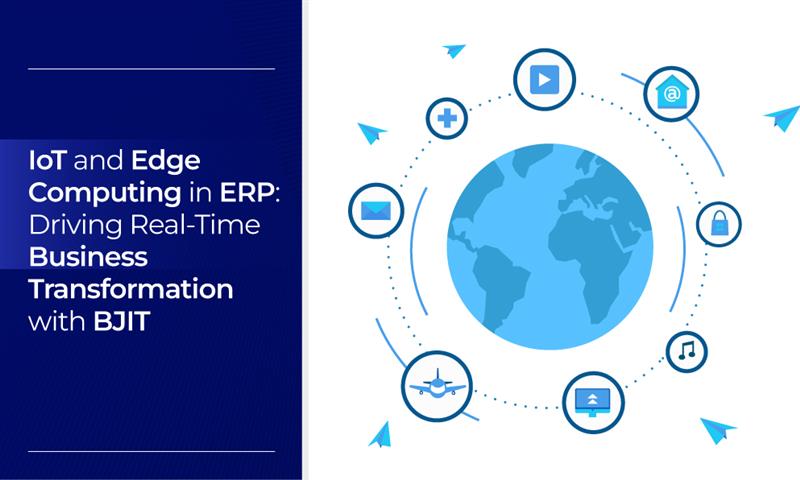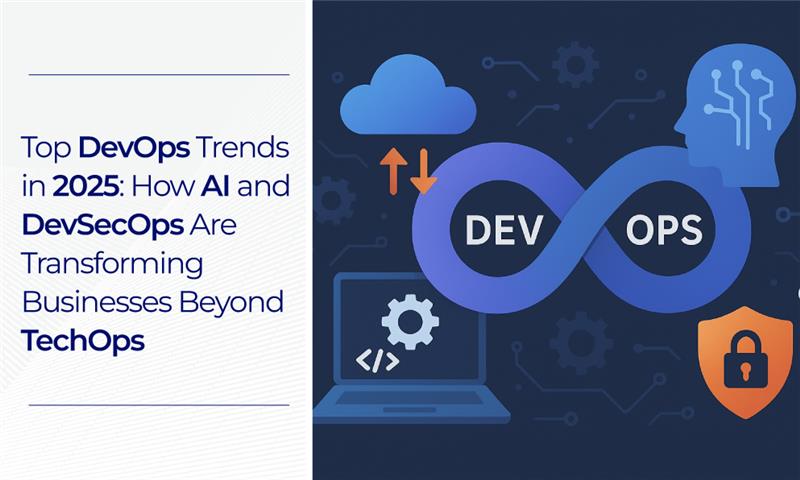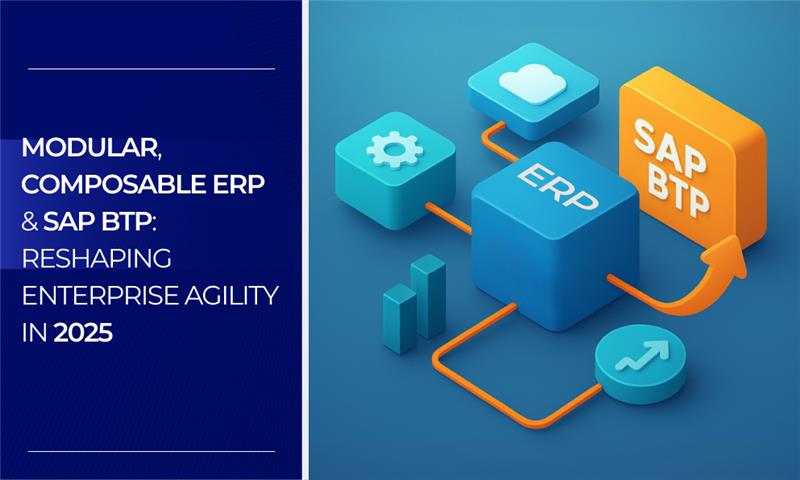In the world of enterprise resource planning (ERP) solutions, Odoo has steadily gained recognition for its flexibility, user-friendly interface, and rich feature set. It provides a comprehensive suite of applications to manage business functions such as sales, procurement, inventory, manufacturing, and more. Traditionally, Odoo has been deployed on-premises, where companies had full control over their infrastructure and data. However, as businesses worldwide face the challenges of rapid digital transformation, the need for more flexible, scalable, and cost-effective solutions has led to the rise of cloud-first deployments.
Cloud-first deployments refer to businesses prioritizing cloud-based infrastructure and solutions for their IT needs. In this blog post, we’ll explore why cloud-first deployments are considered the future of Odoo, particularly in terms of scalability, remote access, hybrid solutions, and the overall impact on business operations.
1. What is Odoo and Why It Matters for Businesses?
Odoo is a robust open-source ERP solution used by businesses of all sizes to manage and automate various business processes. It offers modular applications that can be customized to fit specific industry needs. From handling sales, purchasing, and CRM to managing human resources, accounting, and manufacturing, Odoo has a diverse set of features that make it an all-in-one business management tool.
Odoo's open-source nature allows companies to tailor the software to their specific requirements, providing greater flexibility and reducing the reliance on third-party vendors. This versatility makes Odoo an attractive ERP option for businesses, but the way it is deployed can significantly affect its performance, scalability, and accessibility.
2. Cloud-First Deployments: A Game-Changer for Odoo
A cloud-first deployment of Odoo means hosting the ERP system on the cloud rather than on local servers or on-premises infrastructure. Cloud-based ERP systems have gained traction over traditional on-premises installations because they offer several advantages, including reduced IT overhead, enhanced scalability, and remote access to business data and tools.
Comparison of Cloud and On-Premises ERP Deployments
Key Reasons Why Cloud-First Deployment is the Future of Odoo
Here are some key reasons why a cloud-first deployment is the future of Odoo:
a. Scalability
In today’s fast-paced business environment, companies need ERP systems that can scale quickly and efficiently. Cloud-first deployments of Odoo offer unparalleled scalability, allowing businesses to easily scale up or down as their needs evolve.
Elasticity of Cloud Infrastructure:
Cloud platforms like AWS, Google Cloud, and Microsoft Azure offer elastic computing resources, meaning that businesses can add or remove resources such as CPU, memory, and storage based on their demand. This is especially beneficial for businesses experiencing growth or fluctuating demand (Gartner, 2021).
Cost Efficiency:
Cloud-first deployments allow businesses to pay for only the resources they use, providing a more cost-effective approach to IT infrastructure. Traditional on-premises systems often require significant upfront investment and ongoing maintenance costs. With cloud deployment, businesses can scale their Odoo installation without having to worry about upfront capital expenses for hardware.
Scalability Comparison: On-Premises vs. Cloud
b. Remote Access and Accessibility
One of the primary benefits of cloud-first deployments is the ability to access Odoo from anywhere, at any time. This remote access capability is particularly important in today’s work environment, where hybrid and remote workforces are becoming more common.
Access from Anywhere:
With cloud-based Odoo, employees and managers can access business data and perform tasks from any location with an internet connection. Whether it’s the sales team accessing customer data while on the go or the HR department handling payroll remotely, cloud-first Odoo provides the flexibility to work from anywhere (Forbes, 2021).
Enhanced Collaboration:
Odoo's cloud deployment enables seamless collaboration among employees, even if they’re in different parts of the world. Users can access real-time data, share updates, and collaborate on projects without being tied to a specific office location.
Security and Data Integrity:
Security is a concern for any business handling sensitive data, especially when remote access is involved. Cloud providers invest heavily in robust security infrastructure, including data encryption, multi-factor authentication, and regular security patches. With a cloud-first Odoo deployment, businesses can benefit from enhanced security measures that may be costly or difficult to implement with on-premises infrastructure.
Remote Access Impact on Business Operations
c. Hybrid Solutions: Flexibility at Its Best
Hybrid cloud solutions combine the benefits of both public and private clouds, giving businesses the flexibility to deploy some applications on the public cloud while keeping others on private infrastructure. Hybrid solutions allow businesses to maintain control over critical or sensitive data while still leveraging the scalability and cost-efficiency of the cloud.
Customizable Deployment Options:
A hybrid solution offers the best of both worlds, allowing businesses to use Odoo’s core features on a public cloud while keeping sensitive or regulated data in a private cloud environment. This approach ensures that companies can comply with industry regulations while taking full advantage of the cloud's scalability and remote access benefits.
Gradual Transition:
Many businesses that have already invested heavily in on-premises infrastructure may be hesitant to switch entirely to the cloud. Hybrid solutions allow for a gradual migration from on-premises to the cloud, providing businesses with time to transition without disrupting daily operations.
Hybrid Cloud Benefits Breakdown
3. Key Advantages of Cloud-First Odoo Deployments
Cloud-first deployments of Odoo offer several additional advantages that make it an attractive option for businesses of all sizes:
a. Faster Time to Value
Cloud-first deployments allow businesses to implement Odoo more quickly than on-premises installations. Since the infrastructure is already in place, businesses don’t need to worry about setting up servers, configuring hardware, or managing on-premises resources. This streamlined deployment process reduces implementation time and enables businesses to realize value from their Odoo investment faster (Gartner, 2021).
b. Automatic Updates and Maintenance
With a cloud-first Odoo deployment, businesses no longer need to worry about managing updates, patches, or system maintenance. Cloud providers typically handle software updates and security patches automatically, ensuring that businesses are always running the latest version of Odoo. This reduces the burden on IT teams and helps companies stay up-to-date with the latest features and security enhancements (Accenture, 2021).
c. Reduced IT Costs
Cloud-based Odoo deployments can significantly reduce IT costs for businesses. There’s no need for expensive on-premises infrastructure, dedicated IT staff, or ongoing hardware maintenance. Instead, businesses can rely on the cloud provider’s infrastructure and pay for only the resources they need. This reduction in IT overhead allows businesses to allocate resources to other critical areas of growth and innovation (IBM, 2021).
d. Disaster Recovery and Backup
Data backup and disaster recovery are essential components of any IT strategy. Cloud-first Odoo deployments typically include automatic backup and disaster recovery features, ensuring that data is always safe and easily recoverable. In the event of a hardware failure or data breach, businesses can quickly restore their systems and resume operations without significant downtime (Oracle, 2020).
4. The Future of Odoo with Cloud-First Deployments
As cloud computing continues to evolve, cloud-first deployments of Odoo will only become more integral to businesses' ERP strategies. Odoo’s flexibility, combined with the scalability, accessibility, and security benefits of the cloud, positions it as an ideal solution for businesses looking to optimize their operations and stay competitive in an increasingly digital world.
AI and Automation Integration:
Cloud-based Odoo deployments will also enable businesses to integrate artificial intelligence (AI) and automation technologies more seamlessly. Cloud-first Odoo will allow businesses to leverage powerful AI tools that can optimize inventory management, sales forecasting, and customer service, providing a more intelligent and automated business environment (Accenture, 2021).
Global Expansion:
As businesses expand globally, cloud-first deployments will help them navigate the complexities of operating in multiple regions. Cloud infrastructure allows for easy localization and the ability to serve users from different geographic locations with minimal latency (Deloitte, 2020).
Better Performance and User Experience:
With the continuous advancements in cloud technology, cloud-first Odoo deployments will benefit from faster processing speeds, improved performance, and better user experiences. These advancements will further improve Odoo’s ability to serve businesses in real-time, driving greater operational efficiency (TechRadar, 2021).
5. Conclusion
Cloud-first deployments are indeed the future of Odoo, and for good reason. The scalability, remote access, and hybrid solutions provided by cloud computing are transforming how businesses leverage ERP systems. Odoo’s flexibility and open-source nature, combined with the benefits of cloud-first deployments, make it a perfect fit for businesses looking to optimize their operations, reduce costs, and stay ahead of the competition.
As cloud technologies continue to evolve, Odoo’s cloud-first deployments will only get better, offering even more features, integrations, and security options. By adopting cloud-first strategies, businesses can ensure they remain agile, efficient, and competitive in the digital age.
References
- Accenture. (2021). Why the cloud is the future of ERP. Retrieved from https://www.accenture.com
- Deloitte. (2020). Cloud Computing: Opportunities and Risks. Deloitte Insights. Retrieved from https://www.deloitte.com
- Forbes. (2021). The Future of Remote Work and Cloud-Based Tools. Retrieved from https://www.forbes.com
- Frost & Sullivan. (2020). The Importance of Hybrid Cloud for Business Continuity. Retrieved from https://www.frost.com
- Gartner. (2021). Cloud ERP Market Guide. Retrieved from https://www.gartner.com
- IBM. (2021). Cloud Security: What Businesses Need to Know. IBM Cloud. Retrieved from https://www.ibm.com
- KPMG. (2020). The Cloud-First Movement: Business Transformation with Cloud Solutions. Retrieved from https://home.kpmg
- McKinsey. (2020). Hybrid Cloud Solutions and their Business Impact. Retrieved from https://www.mckinsey.com
- Oracle. (2020). Cloud ERP: The Future of Enterprise Solutions. Oracle. Retrieved from https://www.oracle.com
- TechRadar. (2021). Why Hybrid Cloud is the Future of IT. Retrieved from https://www.techradar.com









